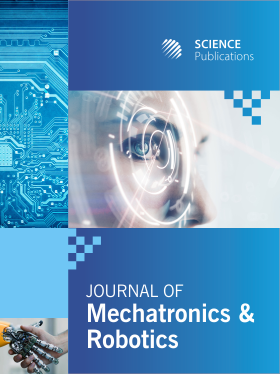Synthesis of Optimal Trajectories with Functions Control at the Level of the Kinematic Drive Couplings
- 1 Bucharest Polytechnic University, Romania
- 2 Second University of Naples, Italy
- 3 Florida Institute of Technology, United States
- 4 North Carolina A and T State University, United States
Abstract
The development and diversification of machines and mechanisms with applications in all fields require new scientific researches for the systematization and improvement of existing mechanical systems by creating new mechanisms adapted to modern requirements, which involve increasingly complex topological structures. The modern industry, the practice of designing and building machinery is increasingly based on the results of scientific and applied research. Each industrial achievement has backed theoretical and experimental computer-assisted research, which solves increasingly complex problems with advanced computing programs using an increasingly specialized software. The robotization of technological processes determines and influences the emergence of new industries, applications under special environmental conditions, the approach of new types of technological operations, manipulation of objects in the alien space, teleoperators in the top disciplines like medicine, robots covering a whole field greater service provision in our modern, computerized society. Movable, robotic, mechatronic mechanical systems have entered nearly all industrial spheres. Today, we can no longer conceive of industrial production without these extremely useful systems. They are still said to steal from people's jobs. Even so, it should be made clear that these systems create value, work in difficult, repetitive, non-pausing, high-quality work, without getting tired, without getting sick, without salary, and producing value who are paid and people left without jobs, so that they can work elsewhere in more pleasant, more advantageous conditions, with the necessary breaks. Before studying the trajectory of a tracer point, through the command laws in the active kinematic clutch space of the robot, the MPz configuration must be set in which the characteristic point occupies the initial and final positions. In the general case, the trajectory of the characteristic point of MPz is materialized by a curve in 3D geometric space, a curve that can be obtained by interpolation on specific portions, depending on the set points of precision. For the manipulation of an object between the initial and the final positions, the following work operations are required: grip (in the initial position), lifting-detachment (by the laying surface), displacement (to the final position, descent) and release (in the final position).
DOI: https://doi.org/10.3844/jmrsp.2017.66.74

- 3,283 Views
- 1,570 Downloads
- 0 Citations
Download
Keywords
- Mechanism
- Robots
- Mechatronics
- Mechanical Systems
- Optimal Trajectories
